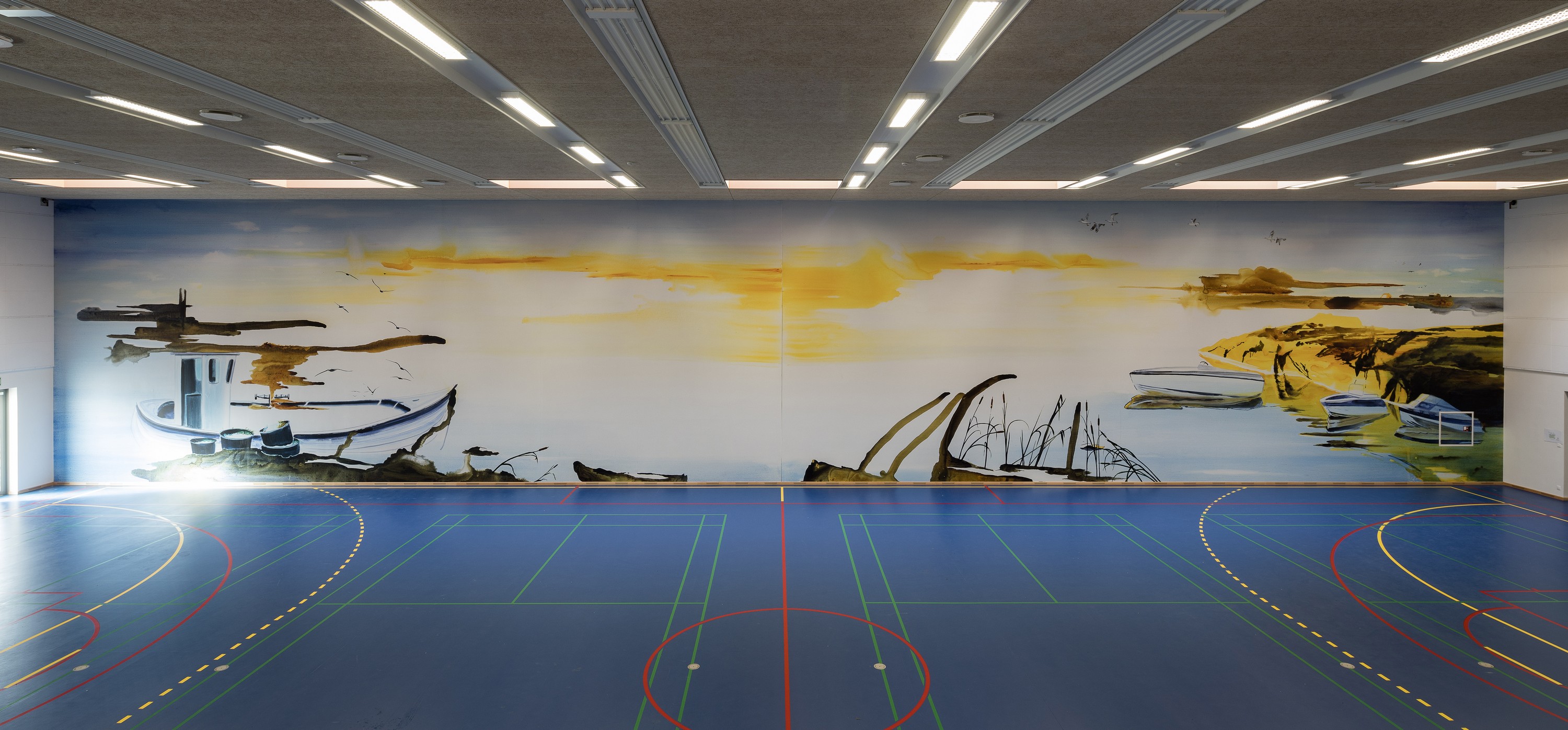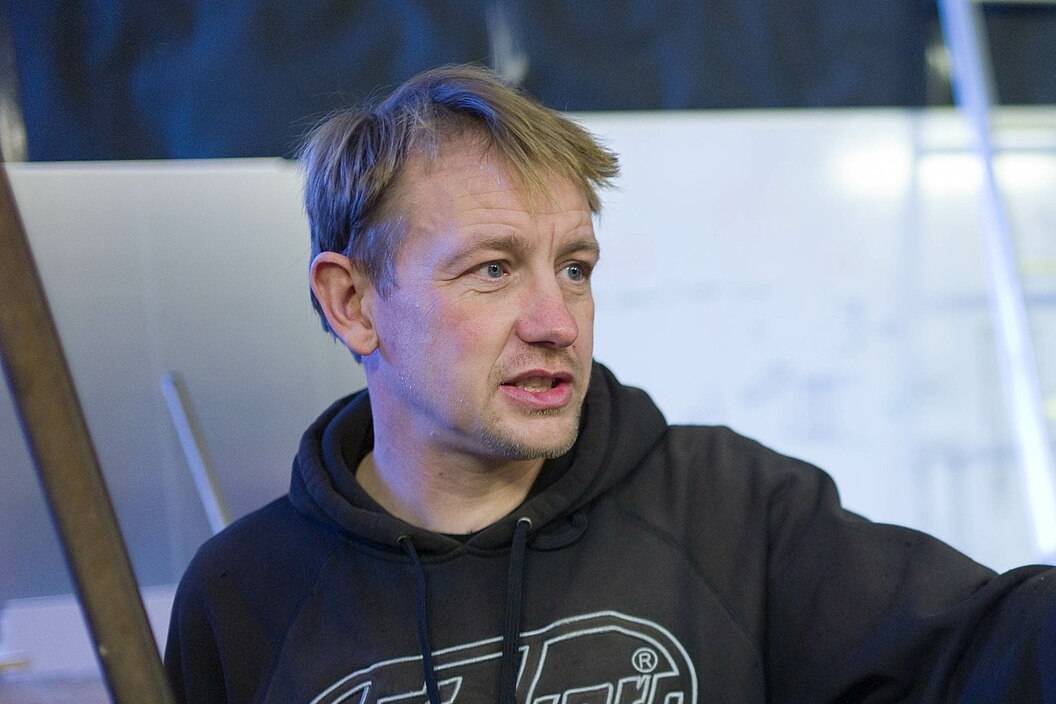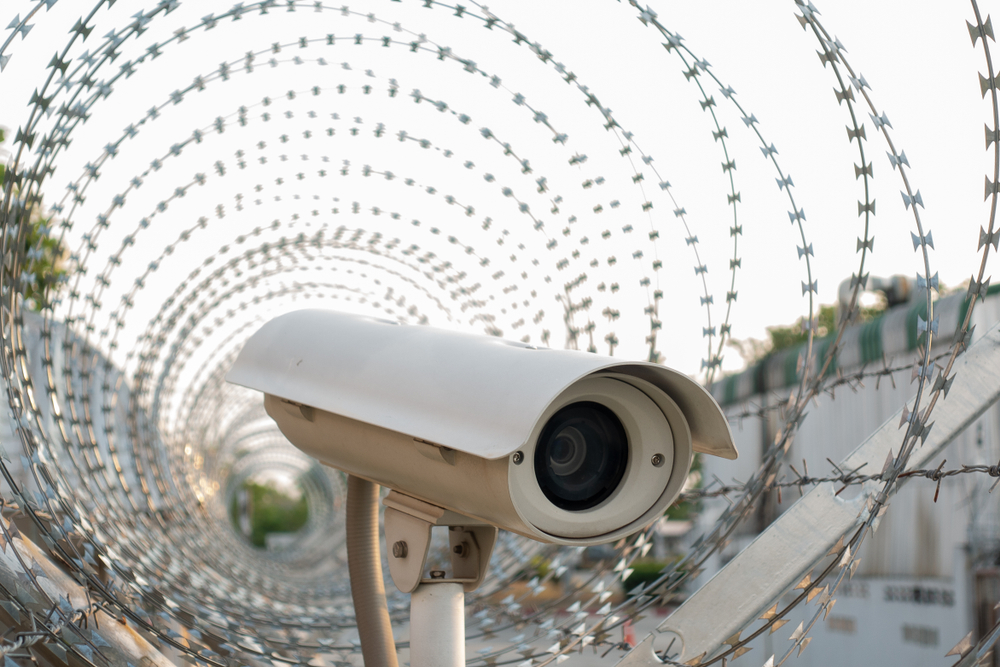The Danish Prison Designed To Look Like A College Campus
Denmark’s luxurious lock-up—home to some of the world’s most heinous offenders—looks more like a university campus than an institution.
With private bathrooms and full-length cell windows, you won’t find many inmates “behind bars” at this maximum-security facility.

Location
Storstrøm Prison is located on the sparsely populated island of Falster, in Denmark—roughly 115km from Copenhagen.
Size & Engineering
The facility is a total of 3,000 square meters, or 377,000 square feet. The $160 million project opened in 2017 after a seven-year building process.
Architectural Design Intent
The overall architectural intent was to create a facility that resembled a small provincial community, that would provide inmates with the desire and ability to rejoin society after serving their sentence.
The architectural design also provides a pleasant and secure environment with a natural element.
Reputation
This intricately designed facility is known as the world’s most humane maximum-security institution—and it makes inmates feel right at home.
 Torben Eskerod, C.F. Møller Architects, Archello
Torben Eskerod, C.F. Møller Architects, Archello
The Architect
The Storstrøm institution was designed by C.F. Møller Architects, and won first prize in an architectural competition in 2010.
 News Oresund, Wikimedia Commons
News Oresund, Wikimedia Commons
Difference Between an Open Facility and a Closed Facility
In Denmark, there are two types of prisons: open prisons and closed prisons. Closed prisons are for inmates with sentences over 5 years, and are more secure/strict than open prisons, which are for inmates with sentences under 5 years.
Storstrøm is a closed prison.
 Torben Eskerod, C.F. Møller Architects, Archello
Torben Eskerod, C.F. Møller Architects, Archello
Accommodation
The institution accommodates 250 inmates (and an equal number of staff) in four standard-security wings and one maximum-security wing. The grounds also include: a visitors’ unit, activity building, workshop building, gate building and staff building.
 Kenneth Bagge Jorgensen, Shutterstock
Kenneth Bagge Jorgensen, Shutterstock
Building Layout
The layout of the ten buildings forms a small urban community with streets, squares and centrally located community buildings.
 Anita Nancke, CC BY-SA 3.0, Wikimedia Commons
Anita Nancke, CC BY-SA 3.0, Wikimedia Commons
Views from the Cells
Most of the urban rooms have windows with views of the surrounding green landscapes up toward the main perimeter wall that encircles the entire facility.
 Torben Eskerod, C.F. Møller Architects, Archello
Torben Eskerod, C.F. Møller Architects, Archello
The Perimeter Wall
Unlike similar maximum-security facilities, the perimeter wall is made with a series of recesses, designed to give a diverse and homier impression and feel less like a typical lock-up.
The Overall Design
The overall design of the building is bright, open, with lots of windows of varied shapes and designs. The walls have textures and designs, and the grounds are immaculately kept.
 Alexander Chaikin, Shutterstock
Alexander Chaikin, Shutterstock
The View for Staff
The architectural design of the building is very specifically created in a way that provides staff with a wide view in all directions from central guard stations. There are minimal blind spots, allowing for staff to keep adequate view and control of their inmates at all times.
Staff Safety
The staff have secure rooms and escape routes available to them in the individual apartments, so that they can act quickly and accordingly in the event of any unrest among the inmates.
 Rebekah Zemansky, Shutterstock
Rebekah Zemansky, Shutterstock
The Interior
Inside the buildings, the walls and floors are colored to help eliminate the institutionalized atmosphere, especially in common areas.
 Torben Eskerod, C.F. Møller Architects, Archello
Torben Eskerod, C.F. Møller Architects, Archello
Artwork
Both works of art and building-integrated decoration can be found all over the facility, including a wall-sized painted mural in the gym and a beautiful bronze sculpture in the urban space.
This is to help make the place feel for comfortable and inviting.
 Torben Eskerod, C.F. Møller Architects, Archello
Torben Eskerod, C.F. Møller Architects, Archello
The Cell: Size
Each cell is a generous 12.8 square meters or 137.7 square feet. Not only are the cell’s larger than usual, they also include amenities that you wouldn’t typically find in any other facility cell.
 Torben Eskerod, C.F. Møller Architects, Archello
Torben Eskerod, C.F. Møller Architects, Archello
The Cell: Amenities
Each cell is equipped with a toiler, shower, bed, desk, chair, wardrobe, refrigerator, television and lighting.
 Torben Eskerod, C.F. Møller Architects, Archello
Torben Eskerod, C.F. Møller Architects, Archello
The Cell: Wall Design
The cells are neutrally colored so that inmates can decorate their cells how they wish. They have a curved design so that staff can view most of the cell from the door, and furniture is designed specifically for the cell, with no sharp corners, in an attempt to minimize the risk of self-harming.
The Cell: Windows
Each cell has two windows, one smaller one looking toward the sky, and another one that is the full height of the cell—giving them a full view of the serene freedom on the other side.
The windows are angled so inmates cannot see into each other’s cells.
Residential Units
The cells are located in residential units that consist of only 4-7 cells. Each cell has access to a living area and a communal kitchen, where inmates can cook for themselves and are essentially free to cook with other inmates as well, if they wanted to.
 Torben Eskerod, C.F. Møller Architects, Archello
Torben Eskerod, C.F. Møller Architects, Archello
Active Socializing
The modern facility puts great emphasis on physical activity, as it is known to have a positive effect on inmates’ mental and social well-bring.
Opportunities for Exercise
Outside, there is a decently sized soccer field and a running track.
Inside the activity building is a large sports hall with badminton, basketball, soccer and handball courts. There are two small gym halls in the maximum-security wing, and each residential unit has its own fitness room.
Outdoor Spaces
Other outdoor spaces are landscaped with a grassy park and a handful of modern art sculptures. There are paved walkways connecting all the buildings and dedicated structures for various workshops available to the inmates
 Torben Eskerod, C.F. Møller Architects, Archello
Torben Eskerod, C.F. Møller Architects, Archello
Other Amenities
In addition to the slew of amenities inmates have inside their residential units, they also have access to an on-site grocery store, a full-sized church, a completely furnished visitor’s facility created with young families in mind, and a full-sized library.
 Torben Eskerod, C.F. Møller Architects, Archello
Torben Eskerod, C.F. Møller Architects, Archello
Scheduled Amenities
Though this facility has more than an inmate could dream for, they still have to keep some sort of structure.
Inmates are only allowed a trip to the library once every 14 days. Church visits are once per week only, and shopping at the on-site grocery store is permitted twice per week.
 Torben Eskerod, C.F. Møller Architects, Archello
Torben Eskerod, C.F. Møller Architects, Archello
The Daily Life
For most inmates, they are provided with employment that fits with their wants, needs, and skills. They are given daily yard time, full access to fitness rooms, and they all have community time at the end of the workday, where inmates can cook together, watch tv, and socialize with their residential unit.
Not All Inmates Are Equal
Although the institution places a high value on well-being, it is still understood that not all inmates are created equally. There are many inmates in maximum-security, as well as solitary confinement.
Less Freedom For Some
There are inmates at Storstrøm that are kept in solitary confinement, or are in different remand programs (for inmates awaiting trial).
These inmates are offered less freedom, and their employment opportunities are different.
Religion
Inmates are free to practice any religion they prefer. The grounds offer a church, and several other denomination rooms that are open to all inmates.
Work
All inmates are required to work while incarcerated. There are various workshops that inmates can choose from. Each workshop has its own space, some indoors and some outdoors.
In addition to working, there are also requirements for therapy and education.
Responsibility
The Correction Services of Denmark believe that having responsibility—in the sense that inmates ought to perform everyday tasks like cooking, taking care of personal hygiene, and contacting the proper authority on their own when they need something—will prepare them for their everyday life after they are released.
 LightField Studios, Shutterstock
LightField Studios, Shutterstock
Maximum Security
The institution is well-equipped to handle maximum-security offenders. The entire property is fully secure, with a 20-foot concrete wall surrounding the perimeter, as well as over 300 security cameras.
The Secure Wing
For the inmates who don’t take well to so much freedom and respect, there is a secure wing. This unit is surrounded by a concrete wall, and inmates and staff are physically separated.
The inmates here have less amenities than in the other parts of the facilities.
 Marko Aliaksandr, Shutterstock
Marko Aliaksandr, Shutterstock
Trouble at Storstrøm
Although there is a high level of trust at Storstrøm, it is important to remember that the inmates are actual criminals, and some will obviously take advantage of the freedoms they are offered.
Trouble at Storstrøm: Knives
As briefly mentioned before, there was a knifing incident in one of the residential units, in which one inmate attacked another with a kitchen knife.
A similar incident was also reported involving a vegetable peeler.
Escape from Storstrøm
Another incident occurred when an inmate got access to a Burqa from a visitor. He had apparently put it on and simply walked out of the facility.
He was never found. It is believed he returned to his home country of Morocco.
High-Profile Inmate at Storstrøm
One notable high-profile inmate at Storstrøm is Peter Madsen—who was sentenced to life behind bars after brutally taking the life of a female journalist and dismembering her body.
Madsen at Storstrøm
During Madsen’s time at Storstrøm he apparently had numerous female visitors, and also had an inappropriate relationship with a female guard—who was subsequently fired after the relationship was brought to light.
But that’s not all he did.
 Per A.J. Andersson, Wikimedia Commons
Per A.J. Andersson, Wikimedia Commons
Madsen’s Plan
In 2018, Madsen was admitted to the hospital after a fight broke out between him an 18-year-old inmate—in which he lost. This is apparently when he started to plan his escape.
Madsen’s Escape
It took him two years, but he did it. In 2020, Madsen escaped Storstrøm and was found in a local residential neighborhood, armed with a piece and a belt with questionable devices attached.
Madsen’s Capture
After being surrounded by various authorities, it was determined that all of Madsen’s devices were decoys and he was once again apprehended and taken back to Storstrøm—where only a small bit of time was added to his sentence.
 ANNE GYRITE SCHUETT, Getty Images
ANNE GYRITE SCHUETT, Getty Images
Resocializing
The “resocializing” strategy essentially involves mirroring the routines of free people so that when the inmates—who are mostly incarcerated for violent crimes—are released, they’re acclimated to law-abiding life.
Recidivism in Denmark
Recidivism—which is the likelihood of a convicted inmate reoffending after release—in Denmark is only about 27%.
This is about half of the United States’ rate, which ranges between 49% and 80%, according to the Washington Post.
Different Approaches
The Danish system has a different approach which makes modifications to prevent fights, smuggling, and escapes. Although they still occur, these incidents are of a much smaller scale than in America.
No Cavity Searches
For example, the Storstrøm facility does not perform cavity searches upon entry.
And in the case of an inmate using a knife on another inmate, the solution was to tether the knives to the wall, not remove them entirely.
Normalization
The whole point is to have the conditions within the institution resembling the norms of everyday life outside as much as possible.
The confining elements of imprisonment should be minimized as much as possible.
 Dilok Klaisataporn, Shutterstock
Dilok Klaisataporn, Shutterstock
Success
In general, Storstrøm is fairly successful in their modern approach to rehabilitation. Not only are their reoffending rates much lower than the rest of the world, but the entire population of the facility (including staff) report feeling safe.
Serious Violence is Rare
Although there have been a handful of incidents at Storstrøm, they are actually fairly few and far between.
Recent reports suggest there are very minimal fatalities in the Danish correctional system as a whole, including inmates who take their own lives—which is a common occurrence in American institutions.
 Kamil Zajaczkowski, Shutterstock
Kamil Zajaczkowski, Shutterstock
Escapes Are Uncommon
The Storstrøm facility has fallen victim to an escape, however it’s apparently a very rare occurrence as well. The facility is highly locked down and the only escapes that have been successful had inside help.
In fact, of the 60,000 inmate leaves granted each year, only 3% failed to return.
Comparison to American Institutions
Even though U.S. facilities conduct invasive search routines, the system still reports constant problems with contraband. Not only that, the Supreme Court reported that at least one inmate passes each week in American institutions.
The Danish Belief
Danish officials claim that their inmates act out less because they are treated humanely. In fact, all Danish institutions treat their inmates differently than the rest of the world. Open facilities even allow families to live with the inmates if they have children under the age of three.
It’s a whole different world over there.
Final Thoughts
Although the Storstrøm prison in Denmark is a maximum-security facility that houses some of the world’s most heinous criminals, its architectural design stands out among institutions all over the globe offering a different approach to rehabilitation.
While the facility boasts upon its success, there are still many people who remain skeptical of their laissez-faire methods.





































